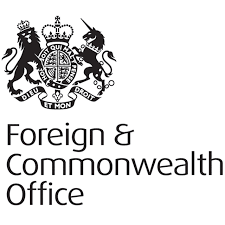PRESS RELEASE : Letter to police on AI enabled facial recognition searches [October 2023]
The press release issued by the Home Office on 29 October 2023.
The Policing Minister writes to police chiefs to set out the importance of harnessing innovative technologies to support police in preventing and solving crimes.
Dear Chief Constables and PCCs,
The government is committed to working with policing to deliver the tools and technology needed to catch criminals. As technology changes so does the nature of crime. Criminals will be sure to exploit advances, and so must we. I am determined that we invest in identifying, developing, and then deploying new and innovative technologies across a range of fields.
There are so many emerging technologies we can already embrace (for example, new AI tools that largely automate redaction, or that help control room triage) but I would like to specifically address Facial Recognition in this letter. Developing Facial Recognition as a crime fighting tool is a high priority and I have been working with the National Police Chiefs’ Council (NPCC) to ensure confidence, clarity, and consistency in its use so that we can bring more criminals to justice and keep people safe. The UK is leading the way with our approach which is open, transparent, and includes key safeguards.
Retrospective – or Passive – Facial Recognition (RFR) entails a crime scene image with a suspect’s face being retrieved from CCTV, mobile phone, dash cams or video doorbells and then checked against the police’s database of images. Every force uses RFR to some extent already, but its use is very variable between Forces and could be greatly increased. Algorithms have advanced hugely in recent months and even blurred, or partially obscured images can now be successfully matched against custody images, leading to arrests. Searching the whole Police National Database (PND) image set rather than just local force ones will maximise the chance of a match, and I encourage routine use of RFR across the entire range of crimes. There are many powerful examples of RFR helping investigators to identify people suspected of murder, sex offences, domestic burglary, assault, car theft and shoplifting, where identification might otherwise have been impossible or taken much longer.
I welcome the significant increase in the use of RFR since 2021 and expect all forces to use it to its full potential. Essex has been conducting the highest number of RFR searches per officer on the PND in recent months. With a concerted effort it should be possible to double the number of searches by May 2024, so they exceed 200,000 across England & Wales, and I am reviewing progress regularly with NPCC leads. There is no question that a combination of the proliferation of video footage available and recent improvements in the matching algorithm will enable many, many more offenders to be identified and prosecuted for the whole range of crimes.
I am also very supportive of the use of Live – or Active – Facial Recognition (LFR) to deter and detect crime in public settings that attract large crowds. LFR entails the rapid identification of people on a watchlist in high footfall locations using special purpose cameras. There is College of Policing Authorised Professional Practice in place and a sound legal basis for LFR. Recent testing by the National Physical Laboratory has provided the necessary assurance about accuracy and the absence of gender or racial bias in the algorithms and at the settings the Met and South Wales Police have been using, and the immediate deletion of non-matched biometric data addresses privacy concerns. Both forces have led the way with the use of LFR, but they have always taken care to communicate to the public both the benefits and the safeguards in place. As their records show, recent deployments have led to arrests that would otherwise have been impossible and there have been no false alerts. No number of officers could have picked those people out of the crowd. The technology is now very accurate, but investment in equitability testing and the fact that trained officers always carefully checked possible matches is crucial to maintaining public confidence. In the past few weeks, the Met recently used LFR at an Arsenal v Tottenham game where it led to the arrest of three people: one charged with being in breach of a football banning order, one wanted on recall to prison for sexual offences, and one who admitted using threatening and abusive words and being in breach of a court order. This technology has great potential to pick up wanted persons who would otherwise go undetected, and to protect public events from specific threats.
Looking further ahead, we have been working with industry to develop a capability roadmap for facial recognition. By the end of financial year 2025/26 government has committed £17.5m to enabling a resilient and highly accurate system that offers the potential for further innovation and seamless searching of all databases of images the police can access. Officer Initiated FR to check the identities of people of interest encountered on the streets in near real time will also be possible in the future, subject to proper governance and safeguards.
Further support is available from the National Facial Recognition Technology Board, and I look forward to working with you all to develop this and other important technologies. Please do get in touch if you would like to discuss this any further or if you have cases studies or best practice to share.
Yours Sincerely,
Rt Hon Chris Philp MP
Minister of State for Crime, Policing and Fire



